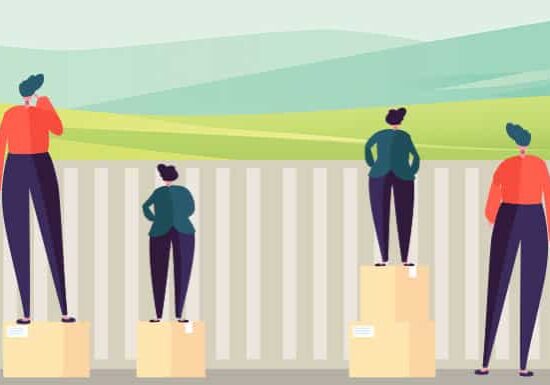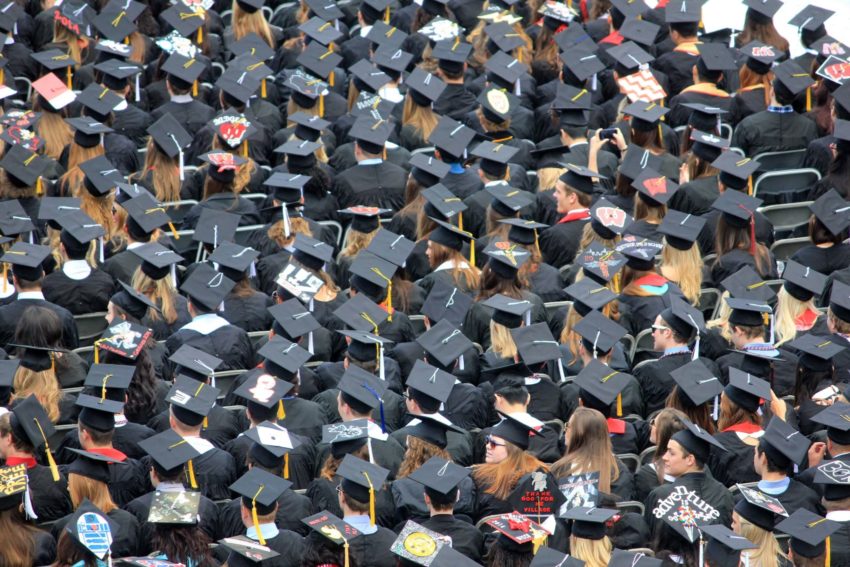Equity vs Equality and How They Are Different
Updated: June 19, 2024
Published: March 16, 2020

It’s easy to think that equality and equity mean the same thing. However, there are crucial differences between equity and equality. These are important to understand, especially when it comes to education. That’s why we are going to dive deeply into equity vs equality and see how fairness, success, and society are affected by these notions.

Photo by Good Free Photos on Unsplash
Defining Equality
According to Merriam Webster Dictionary, equality is the “quality or state of being equal,” where equal is defined as having the same measurement in quality, nature or status.
When applying this definition to social structures — like education, politics, and government — equality means that all segments of society have the same level of support and opportunity. This means that regardless of one’s gender, race, sex, religion, etc., opportunities remain the same. It ensures that people in different social statuses or groups will not be discriminated against.
In the United States, equality in education was ensured in the 1954 Supreme Case of Brown vs. Board of Education, where the Court ruled that “separate is inherently unequal” with regards to having segregated schools between African American and white students. After this ruling, schools became integrated, and it led to the Civil Rights Act of 1964.
Defining Equity
The Merriam Webster Dictionary defines equity as, “something that is equitable,” where equitable is defined as, “dealing fairly and equally with all concerned.”
In education and social structures, equity refers to the fact that different people have varying needs of support and assistance. Therefore, systems exist to be able to support individuals based on their specific needs.
The goal of equity is to help achieve fairness in treatment and outcomes. It’s a way in which equality is achieved.
For example, the Americans with Disabilities Act (ADA) was written so that people with disabilities are ensured equal access to public places. For example, it means that public restrooms need to have ramps so that people in wheelchairs can enter.
Understanding the Difference Between Fairness and Success
Without taking into consideration the different circumstances from which someone enters a situation, it’s hard to actually achieve equality. That’s because every individual is inherently different. So, when it comes to fairness and setting up children for success, varying needs need to be taken into consideration.
Equity is the idea of “leveling the playing field” so that fairness happens along the path to success. Equality treats everyone the same without paying attention to the natural differences between people in different races, sexes, social classes, and more.
If we take this into account when it comes to education, it becomes easier to understand.
Think about it this way — everyone learns differently. Some students do better with auditory learning, while others prefer visual learning and have to see things to understand them. If a teacher only teaches with one style, it will favor those students who prefer this method. While it’s equal because everyone gets the same treatment, it’s not equitable because some students may have performed better given a different teaching style.
Equitable Practices
It’s understandable why equity is hard to achieve. Our systems are designed to favor the majority, but this means that some individuals slip through the cracks.
So how can we change systems to be equitable? It would be hard to service every individual need, especially in higher education, where classrooms are often filled with hundreds of students from different backgrounds.
One way to approach the situation is to practice “differentiated instruction.” This requires that teachers and leaders pay close attention to those who don’t fit the average mold so that they can work towards serving their needs, too.
Equity and Equality Are Not Equal
From these definitions and examples, it becomes more clear that equity and equality are not equal. However, equality actually depends on equity. To be able to make something the same for everyone, it first requires “leveling the playing field.”
1. Examples in Health
Health equity, according to the Center for Disease Control (CDC), would mean that every person, regardless of their social position, has what they need to “attain his or her full health potential.”
However, people in different socioeconomic groups and races are disproportionately affected by diseases.
For example, those in poverty have a higher chance of developing a chronic disease. When those facing chronic illnesses are in wealthy countries, they can survive it. But, in a poor country, those with chronic diseases are more likely to die from it. This is even more true for women.
The widening inequality between the rich and the poor when it comes to health is a clear case of why equality and equity are important. They can make the difference between life and death.
2. Examples in Public Policy
Public policy may call for the need to cut back on resources, like the operating hours of recreation centers and libraries.
In one case, if the local government approaches the change equally, they could cut all the hours across the board by the same amount. Yet, there’s a likely chance that less wealthy neighborhoods use these social spaces more frequently than rich neighborhoods that can afford access to private gyms, for example.
An equitable approach would be to check which neighborhoods frequent these public locations more often. Then the government could cut the hours in the locations that are less used instead of cutting them all equally.
3. Examples in Religion
Religious equality means that people cannot be discriminated against for their belief systems. One place where this can be seen is in the workplace. If someone wants to take off work for a religious observance, their employer is legally not allowed to deny them that right.
4. Examples in Education
Equity vs equality in education is important to understand. Equality means every student has the same experience. Equity goes further to remove the discrimination of different group.
In fact, 97% of teachers realize the necessity of equity in the classroom, but it’s not always so easy to know how to achieve it. As briefly mentioned above, equity would mean that resources are allocated based on individual needs. Equality would instead give everyone the same resources.
Some tips to achieve equity in education include:
- Understanding a student’s individual challenges and offering tailored support
- Fostering an environment where students feel comfortable to speak up and express their needs
- Openly communicate with the parents and guardians of students
- Offering equity training
- Adding exercises that promote inclusion and diversity in activities so everyone feels like they belong

Photo by Pixabay from Pexels
Technology in Education
There’s no one right answer to achieving equity and ensuring equality in education.
However, access to technology is offering a method to help close the gaps in accessibility. While there are obvious challenges when it comes to technology in the first place — like the fact that everyone needs to have hardware to access the internet and the like — it’s still moving the needle toward equity.
Some benefits of technology in a learning environment have led to:
- Students having the ability to access educational materials when outside of the classroom
- Students and teachers having the means to create more creative methods to teach/learn and tailor these methods to an individual’s preference
- The use of data is providing more insights to policy makers and teachers to know what is and isn’t working
Why Equity vs Equality Matters
Equality and equity matter greatly in education. This is because education serves as a basis for how society progresses. On an individual level, better education leads to better health and ultimately to individuals that are more involved in society.
How University of the People is Closing the Gap
The University of the People was established to help achieve a democratic reality for higher education.
In many instances, the individual needs of students have been overlooked on traditional university campuses.
For example, students in disadvantaged countries where the physical resources simply don’t exist for college campuses would mean that these students could not attend college. Or, for the students who are focused on raising a family and can’t attend classes in-person, they’d have to sacrifice education for their family.
The good news is, University of the People is a 100% online and tuition-free institution that provides equal and equitable educational opportunities for students around the world.
Students from over 200 countries and territories are involved in earning their degrees across four subjects at UoPeople, namely: Computer Science, Health Science, Business Administration, and Education.
UoPeople is committed to providing high-quality education at a fraction of the cost of traditional universities, thanks to the help of donations and volunteers who dedicate themselves to delivering education to all.
The Bottom Line
Equity vs. equality in education is understandable in theory, but in practice, can be complex to achieve. However, with the help of technology and societies that constantly progress, it is an achievable goal.
As an educator, it’s important to remember the needs and backgrounds of every student you come into contact with. As a student, it’s worth remembering that you can speak up for what you need and be heard.
Together, we can achieve equality and equity in education!
